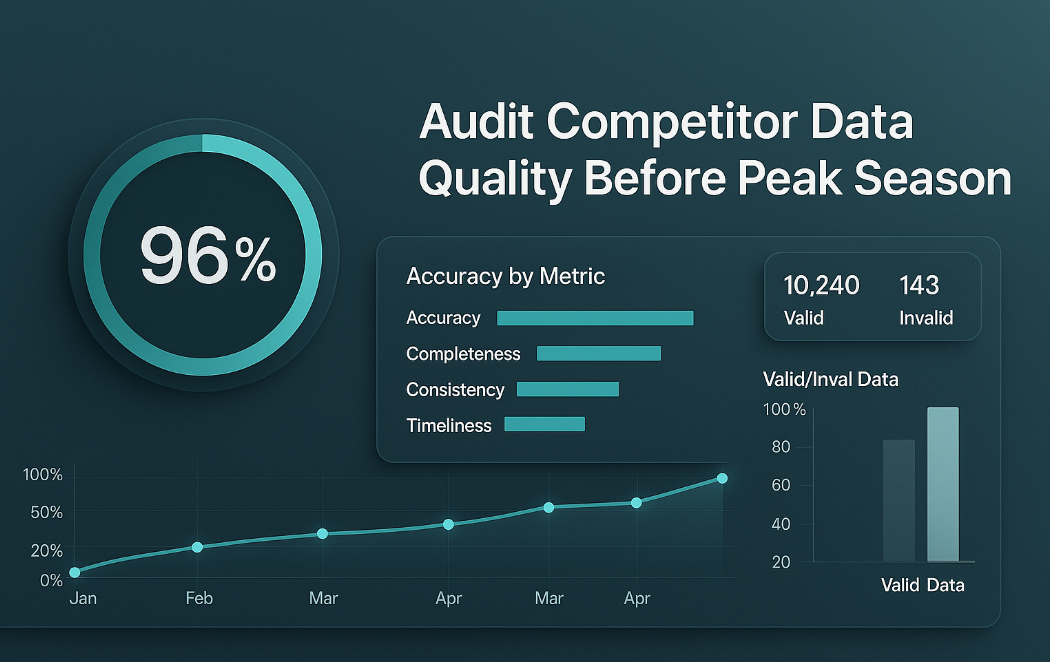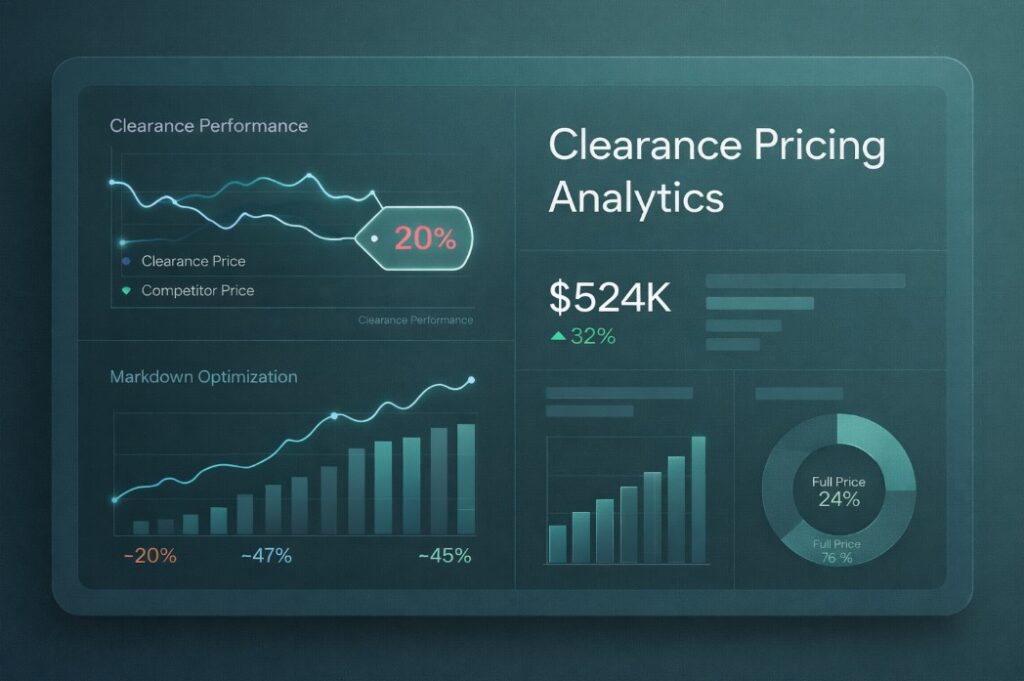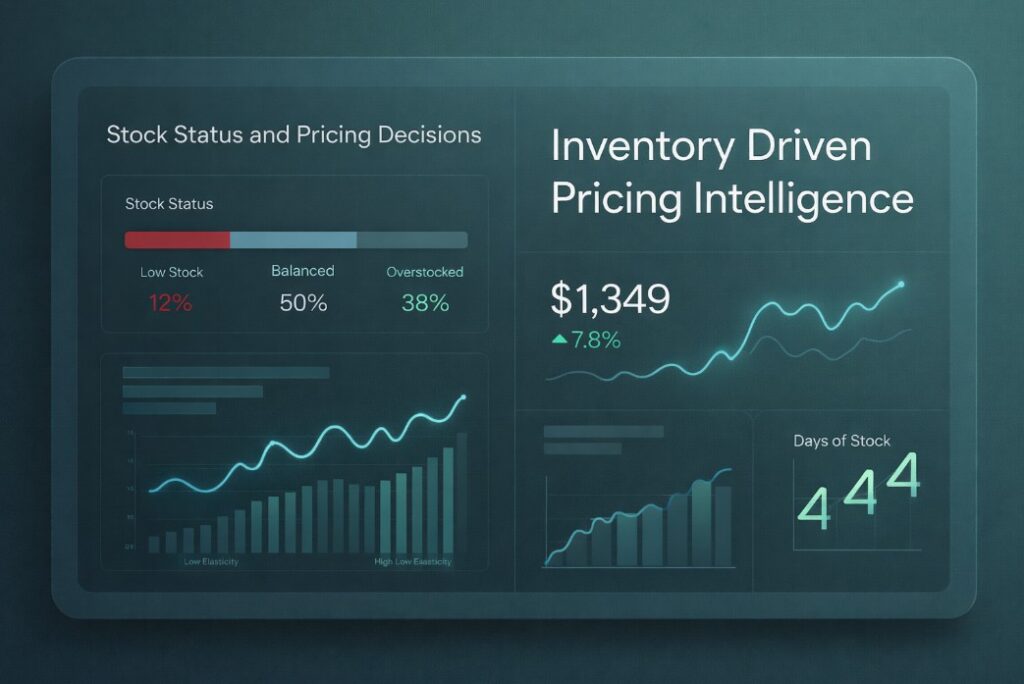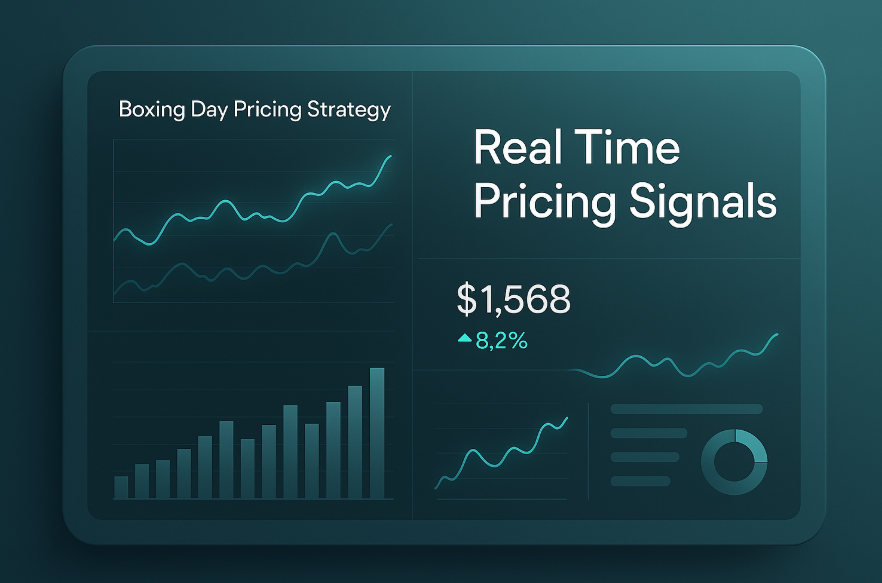- Product
- Solution for
For Your Industry
- Plans & Pricing
- Company
- Resources
For Your Industry
As retail enters its most competitive months, ensuring data accuracy becomes mission-critical. A competitor data quality audit empowers pricing teams to validate, clean, and optimize the data streams driving pricing and assortment decisions — preventing costly errors during peak season.

In the high-stakes world of retail, poor-quality competitor data can lead to missed revenue opportunities, pricing mismatches, or lost market share. A competitor data quality audit helps identify inconsistencies in scraped prices, missing product matches, or outdated availability signals before they influence automated pricing decisions.
When done well, it ensures that your dynamic pricing engine operates on trusted, verified intelligence — not flawed or incomplete datasets. For brands and retailers gearing up for peak demand, that trust can make the difference between leading and lagging behind.
Bad data costs retailers more than just errors — it skews strategy. According to McKinsey, organizations using accurate, real-time data are 23% more likely to outperform competitors in profit growth.
Incorrect price matching: Product mismatches or duplicate listings distort market positioning.
Outdated stock or availability data: Leads to pricing against products that are no longer in stock.
Incomplete category coverage: Results in blind spots that competitors exploit.
Unstructured product attributes: Prevents accurate segmentation and rule-based automation.
A competitor data quality audit identifies these breakdowns early, allowing data teams to restore confidence before key trading periods like Black Friday or Christmas.
Before beginning your audit, define what “quality” means for your organization. Most pricing teams measure competitor data health across five pillars:
| Metric | Description | Target Threshold |
|---|---|---|
| Accuracy | Correctly matched prices and products | 98–100% |
| Completeness | Percentage of data fields filled (e.g., SKU, price, brand) | >95% |
| Timeliness | Frequency of data refresh and latency | <1 hour |
| Consistency | Uniform formatting across data sources | 100% |
| Relevance | Alignment with current pricing strategy or assortment | Context-dependent |
Tracking these metrics consistently provides a benchmark for future audits and helps justify investments in automation or better data sources.
Your competitor data originates from multiple feeds or web-scraping sources. Before peak season, validate the integrity of these pipelines:
Check scraper uptime and data refresh intervals — are you still capturing hourly updates for fast-moving categories?
Review anti-bot response handling — blocked requests can quietly reduce coverage.
Verify data deduplication rules — multiple scrapers can generate redundant listings.
Ensure SSL compliance and ethical scraping practices — privacy and compliance should remain intact.
A structured competitor data quality audit should include a source reliability report summarizing these technical health checks.
Product matching aligning your SKUs with competitors’ equivalent items is the foundation of pricing accuracy. Even minor mismatches can skew competitive intelligence.
Attribute-level comparison: Validate brand, model number, size, and variant.
Image and title similarity analysis: Use AI-based similarity scoring to flag mismatches.
Manual review samples: Randomly sample 1–2% of matches to measure precision.
Cross-source validation: Compare matches across multiple data providers.
By integrating these tests, teams can quantify and correct errors before automated pricing rules go live during high-traffic periods.
Outlier detection ensures that a few incorrect prices don’t distort your analytics. Implement statistical or rule-based filters that identify extreme deviations from category averages.
Prices ±30% away from category median
Zero or null values
Duplicated entries
Conflicting stock statuses
Removing outliers enhances both the reliability of analytics dashboards and the accuracy of dynamic pricing algorithms.
Comparing current and historical competitor data is one of the most effective ways to reveal integrity issues. Look for unusual fluctuations that suggest scraping or matching errors.
Daily product coverage trends
Price change frequency per retailer
Historical completeness ratios
Category-level volatility
A healthy dataset should show stable coverage patterns and predictable price movement. Any sudden anomalies should trigger deeper inspection during the competitor data quality audit.
Once your audit identifies and resolves inconsistencies, test how your pricing algorithms respond to the refined dataset. This ensures your machine learning models or rule-based systems remain calibrated for accuracy and profitability.
Use A/B testing to compare:
Model outputs before and after cleaning
Impact on margin optimization
Error reduction rates in automated repricing
This data-backed validation step proves the ROI of your audit and reinforces the strategic value of data governance.
A single audit before peak season is valuable — but continuous monitoring delivers sustained reliability. Integrate automated quality alerts that track key KPIs like data completeness, timeliness, and accuracy.
Real-time dashboards for data integrity
Automated rechecks for product matches
Smart alerts for missing or delayed feeds
Periodic quality score reports for leadership
This approach transforms your competitor data quality audit from a one-time project into a continuous improvement cycle.
tgndata’s advanced pricing intelligence platform simplifies every stage of your competitor data quality audit. Using AI-powered matching, automated validation, and granular quality metrics, tgndata ensures your retail decisions rest on reliable, actionable intelligence.
Product matching with 99% accuracy
Dynamic data verification for live price and stock updates
Custom quality dashboards that flag anomalies instantly
Automated compliance checks for data sourcing and governance
With tgndata, pricing teams gain full transparency into the accuracy and integrity of their competitive datasets — empowering confident, profitable pricing decisions throughout peak season.
A precise competitor data quality audit is the foundation for confident, profitable pricing. By auditing early — before peak season — pricing teams eliminate uncertainty, prevent automation errors, and ensure that every decision reflects the real market.
tgndata helps leading retailers achieve this reliability at scale through advanced AI validation, quality scoring, and continuous monitoring.
Transform your competitor data into trusted intelligence. Start your audit with tgndata today.













Missing an important marketplace?
Send us your request to add it!